Introduction

The Pulsar badge has been an integral part of performance biking in India. Its contribution to the still developing motorcycling culture in India has been as paramount as the presence of Windows in the world of computers. Think about it; it was not the first at the scene but demolished whatever little competition almost instantly on arrival. It has got issues that we all rant about and there are better (pricier) alternative; it was never the most loved brand and despite the constant upgrades and development it is somehow never good enough. Yet, for some reason each one of us has been associated with Windows (… and Pulsar) in more than way.
So while we might not have erupted in jubilant celebrations on the launch of the new Pulsar AS 150, it is needless to point out that this is the game changer for the under-200cc semi-faired motorcycles. We took the new Adventure Sport motorcycle for an outing in Lavasa to find out if the new product from Bajaj is as revolutionary as they claim, or our love and hate relationship with Pulsars will continue.
Looks

The Pulsar AS 150 is a fantastic looking motorcycle. It may be an NS with a half fairing, but each part has been thought over carefully and falls in place rather nicely to create a motorcycle that has a versatile appeal.
Like the traditional adventure motorcycle design, the AS 150 has a faired headlamp with a decently big visor. The ‘V’-shaped headlamp has sculpted surrounds adding aggression to the face. The tank shrouds visible on either side of the headlamp add to the overall mass and when looked at from the front, the AS looks much bigger than most of the 150cc models.
The front-three-quarter and the side profile highlight the chiseled tank and tall frame; it is from these angles that the AS tries to convince us about its adventure motorcycle form. The perimeter frame is part of the visual appeal, painted in the same black colour as the engine, and in contrast with the tank and rest of the coloured panels. Like in many of the modern motorcycles, the visual mass is limited towards the tail end. However, the overall design here is much more balanced and I like the fact that the front fairing does not look like a large head on a small body.

Bajaj has omitted the underbody cowl, showing off the 170mm ground clearance that will come handy on the bad roads. Another important change compared to the 150 DTSi is the monoshock suspension at the rear, which apart from being a differentiator in ride and handling also makes the motorcycle look premium. The rear of the motorcycle hasn’t received any alterations when compared to the NS 200, it gets the same step seat, rear tail lamps, grab handles and even cut exhaust. Nothing wrong in any of these, it’s just that we would have loved to see some innovation here.
The quality of Bajaj products has improved significantly with the recent products and it is distinctly visible in the new Pulsar AS 150. The paint, fit and finish of the panels, foot pegs, grab rails, visor and most other parts are of top quality. It also has a decent features’ list with the projector headlamp, backlight for the switch-gear, LED tail lamps and detailed instrument cluster.
Looks are subjective and we are at logger heads within the team with half of us claiming the RS is the best looking bike from Bajaj. Personally however, I am fond of the subtler approach used for the AS with no graphics and form that makes it look like a true entry-level adventure motorcycle.
Engine
The motorcycle uses a new 150cc engine DTSi engine that develops 16.8bhp at 9,5000rpm and 13Nm of torque at 7,000rpm. This makes the AS 150 the second most powerful 150cc motorcycle in India, just behind the Honda CBR150. Also the AS 150 is lighter with the perimeter frame and that translates to strong performance on road.

The motorcycle is quick off the line, especially with the short ratios for the first two gears. The power is high up the rev range, but the gearing makes it ideal for city use where it is expected to ply the most. Rest of the gears however are tall and that means the bike needs to be kept on the boil if the intention is to get beyond the speeds of 80 kmph quickly. A cruising speed of between 80kmph and 100kmph is possible on the highways but getting there takes a while.
Beyond 7,000rpm is where peak torque really pushes the bike and that is further boosted by the peak power closer to the red line. Bajaj claims that this engine is all-new and is not related to the mill used in the Pulsar 150 DTSI. It might be true, but certain characteristics are still similar to that of the older unit. Vibrations can be felt on the handle bars, foot pegs and even on the seat beyond 7,500rpm; the gearbox is clunky and requires extra effort. The overall refinement has improved by miles compared to the previous engine, but competition has moved forward as well and this is still not the best engine in the segment terms of refinement.
Ride & Handling

The Pulsar has always been a relatively heavy motorcycle and the AS one is no different, add to it the tall riding position and it becomes slightly more difficult to manage. It is now an adventure motorcycle though and the taller riding stance is justified.
The AS 150 has an upright riding position for ease of riding both in the city and on the highway. The clip-on handle bars aren’t too sporty and the foot pegs are forward set. Apart from these, the AS also has a visor and it does help, but only so much since the AS 150 isn’t really a fast motorcycle.
The ride in general is comfortable and suspension is a bit soft to tackle a little bit of bad roads. It might be called ‘Adventure Sport’, but it is not made for off-roading. It uses the MRF Zapper road tyres and has alloy-wheels that are not best suited for gravel roads. It is still capable of getting you out of a sticky situation and for the occasional detour off tarmac when the roads are too jammed.
The perimeter frame is the reason behind the success of the Pulsar 200 NS and that has finally moved down to the lower segment with the AS 150. It brings in agility and a handling prowess that most semi-faired 150cc motorcycles don’t have. The motorcycle is capable of handling corners pretty well, add better tyres and even with the upright position it will be the best in segment.

The gear lever is in an odd position and I hope Bajaj rectifies that in the course of time. The other complaint that we have is that the 150cc motorcycles are becoming more powerful and quicker with each passing year and now require better stopping ability. The drum brakes at the rear, though provide decent feedback, doesn’t do enough to bring the speeds in check quickly. A disc brake setup is a necessity.
Verdict
The Pulsar AS 150 is miles ahead of the previous 150cc iterations from Bajaj in terms of performance, quality and refinement. However, the competition has moved ahead as well, so while I agree that this motorcycle is easy to live with, it still not the best in terms of mechanical package.
However, the most important thing that one looks for in the 150cc segment is the versatility – a person would rather move to a higher segment than two or more purpose built 150cc bikes. And this is where the AS 150 excels; it is a nice city bike, does okay on bad roads, will be a comfortable companion for long rides and has one of the best handling dynamics in the segment.

At Rs 79,000 (ex-Delhi) it is also one of the best deals in the under-200c semi-faired segment. The Pulsar AS 150 then is like another version of the Windows; I might not like everything about the way it works, but would still opt for one as the most sensible option.
Gallery
1/20
Double Tap to Zoom











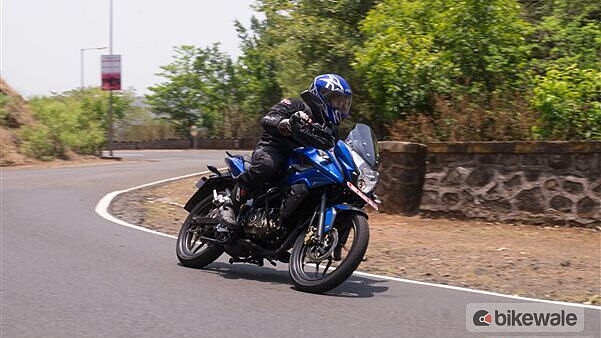













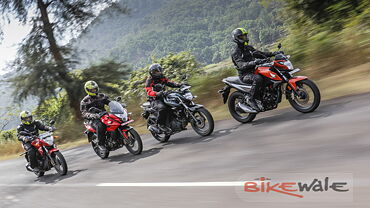






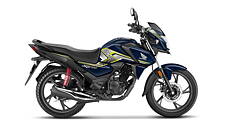

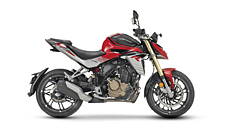
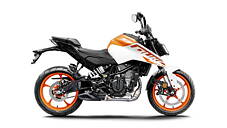






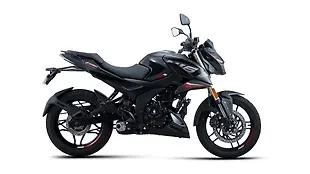
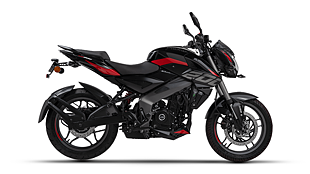
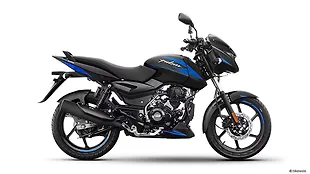





![KTM 390 Adventure X [2025] KTM 390 Adventure X [2025]](https://imgd.aeplcdn.com/272x153/n/cw/ec/190885/390-adventure-x-2025-right-side-view.jpeg?isig=0&q=80)